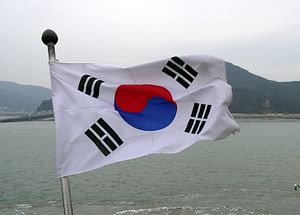By Robert Farley
 South Korea has decided to build aircraft carriers. New defense planning documents offer a roadmap for building at least one light carrier by 2030. Some early reports had suggested that the Republic of Korea Navy (ROKN) would try to refit its Dokdo-class amphibious assault ships to operate F-35Bs. While conceptually possible, this plan would have resulted in small, cramped, unsatisfying ships, and would likely have gutted the ROKN’s amphibious capabilities.
South Korea has decided to build aircraft carriers. New defense planning documents offer a roadmap for building at least one light carrier by 2030. Some early reports had suggested that the Republic of Korea Navy (ROKN) would try to refit its Dokdo-class amphibious assault ships to operate F-35Bs. While conceptually possible, this plan would have resulted in small, cramped, unsatisfying ships, and would likely have gutted the ROKN’s amphibious capabilities.
The purpose-built South Korean carriers are projected to displace in the 30,000-ton range, making them slightly larger than the Japanese Izumos. Although Japan built the Izumo and Kaga with an eye toward the possibility of conversion, the South Korean ships will likely have some advantages from being purpose-build carriers from the keel up. The new carriers are projected to carry the F-35B STOVL stealth fighter, which is rapidly becoming one of the world’s most important carrier aircraft. South Korea’s own stealth fighter project does not seem likely to produce a carrier-capable aircraft, especially for ships the size of the ROKN vessels.
The ships will form the core of a well-balanced fleet, including large surface combatants, amphibious assault ships, and potentially nuclear submarines. But can South Korea afford aircraft carriers in the long-term? South Korea is somewhat smaller in size and economic footprint than France, which is the only country other than the United States that has maintained a first-rate naval aviation capability since the end of World War II. Great Britain and India have maintained carrier forces for most of that period, with a few interruptions, while smaller or less wealthy countries (including Australia, Canada, Brazil, Argentina) have struggled to maintain such capabilities, either enduring gaps over time or suspending their entire programs as ships come to age.
South Korea’s primarily military problem remains the existence and hostility of North Korea. But with both Japan and China building aircraft carriers, and with the United States no longer a reliable partner, the decision to pursue carriers has a clear strategic logic. The prominence and novelty of the Japanese and Chinese carrier programs almost certainly mean that considerations of national prestige also play a role. Still, one or two carriers would have their uses in a military confrontation with Pyongyang, offering South Korea a means of conducting mobile strikes from unpredictable vectors.
The carriers and their associated battle groups will offer South Korea options for carrying out long-range naval operations, depending on whether Seoul ever figures out what its distant national interest would look like. Until then, the ships will give the military shipbuilding industry something to do, offer additional options in a conflict with the North, and give Seoul a one-up in the prestige race with Tokyo and Beijing.
No comments:
Post a Comment